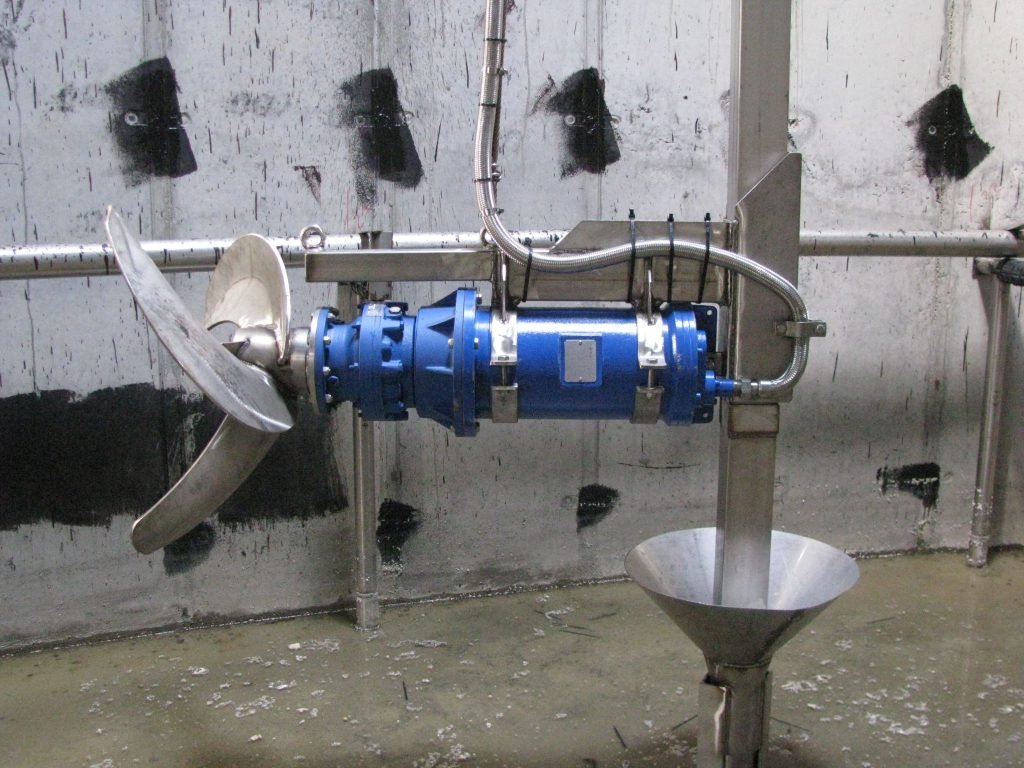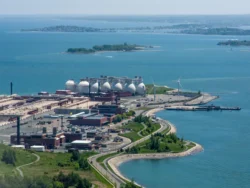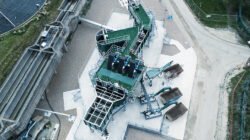Wastewater Agitator

Understanding Wastewater Agitators: Essential Tools for Efficient Waste Management
In the complex world of wastewater management, agitators play an indispensable role. They are crucial components in treatment plants, ensuring the homogenization and proper mixing of various substances, which is vital for effective wastewater treatment processes. This article delves into the realm of wastewater agitators, exploring their types, functionalities, and their significant impact on water treatment processes. Join us as we explore this essential tool and its contributions toward sustainable waste management.
Section 1: The Basics of Wastewater Treatment
Before we delve into the specifics of wastewater agitators, it’s essential to understand the wastewater treatment process. Wastewater treatment involves several stages that aim to remove contaminants from water and make it suitable for discharge into the environment or reuse. The main stages include:
-
- Preliminary Treatment: This initial stage involves removing large solid particles and debris to prevent damage to subsequent treatment units.
-
- Primary Treatment: Here, suspended solid particles are settled out from the wastewater, reducing the overall load and preparing the water for further treatment.
-
- Secondary Treatment: This biological phase involves the use of microorganisms to degrade organic matter in the wastewater.
-
- Tertiary Treatment: An advanced stage that further polishes the effluent, removing remaining pollutants to meet stringent quality standards.
-
- Disinfection: The final stage, ensuring that pathogenic organisms are killed or reduced to safe levels before the water is released back into the environment.
Agitators play a key role, particularly in the primary and secondary treatment phases, ensuring optimal conditions for each stage of the process.
Section 2: What is a Wastewater Agitator?
A wastewater agitator is a mechanical device specifically designed to facilitate the mixing and homogenization of fluids and semi-solids within a treatment plant. It consists of components like impellers, shafts, and motor systems. The agitator’s primary function is to ensure consistent conditions and prevent the settling of solids, thereby facilitating efficient biological and chemical reactions.
2.1 Why Agitation in Wastewater Treatment?
Effective agitation prevents the stratification of differing materials, ensuring uniform composition throughout the system. It enhances the contact between solids, liquids, and microorganisms, vital for the biological degradation of contaminants. Some of the core reasons for employing agitators include:
-
- Chemical Mixing: Ensures thorough integration of chemicals that may aid in coagulation, flocculation, or pH adjustment.
-
- Bio-Solids Management: Maintains suspended solids to optimize their decomposition and prevent sedimentation.
-
- Heat Distribution: Facilitates even distribution of temperature, especially in processes that are temperature-sensitive.
-
- Oxygen Transfer: Enhances oxygen transfer in aerobic biological processes, vital for the survival and function of aerobic microorganisms.
Section 3: Types of Wastewater Agitators
Choosing the right agitator depends on the specific application and characteristics of the wastewater being treated. Below are the primary types of agitators used in wastewater treatment:
3.1 Mechanical Agitators
3.1.1 Top-Entry Agitators
These are the most common type of agitators used in wastewater treatment plants. Mounted vertically on the top of the tank, they are equipped with motor-driven impellers. They are suitable for medium to large tanks and effectively provide thorough mixing by creating a downward and upward fluid flow pattern.
3.1.2 Side-Entry Agitators
Positioned on the side of the tank, these agitators are ideal for large storage tanks where maintaining a low capital cost is crucial. They produce a tangential flow pattern and are particularly effective in applications where top-entry configurations are impractical.
3.1.3 Bottom-Entry Agitators
Used in specific applications where top clearance is restricted or process considerations dictate their suitability. Bottom-entry agitators are effective for maintaining solids in suspension and providing gentle mixing.
3.2 Jet Mixers
Jet mixers are non-mechanical agitators that mix fluids through high-speed circulation generated by a pump. They draw fluid from the tank and reintroduce it with force, creating a mixing action. Jet mixers are valued for their low maintenance requirements and the absence of moving parts within the mixing zone.
3.3 Submersible Agitators
Submersible agitators, as the name implies, are submerged within the tank or vessel. These compact devices are extremely versatile and can be positioned precisely where agitation is required, providing focused mixing in specific zones.
3.4 Aeration System-Integrated Agitators
In aerobic treatment processes, aeration is often coupled with agitation. Diffused air systems, surface aerators, and mechanical aerators not only supply oxygen but also create agitation, promoting the biological degradation of organic matter.
Section 4: Factors Influencing Agitator Selection
Selecting the right agitator is critical to achieving efficient treatment outcomes. Several factors must be considered during the selection process:
4.1 Nature of the Wastewater
The composition and characteristics of the wastewater, such as its viscosity, density, and solid content, heavily influence the type of agitator to be used. For example, highly viscous sludge requires more powerful agitation solutions compared to lighter liquids.
4.2 Tank Geometry
The shape and size of the tank or basin is a critical consideration. Cylindrical tanks may benefit from specific flow patterns achievable with top-entry agitators, while larger reservoirs may be better suited to side-entry or jet mixer configurations.
4.3 Process Requirements
Understanding the specific process requirements, such as the desired mixing intensity, heat transfer needs, or solid suspension requirements, can guide the selection of the appropriate agitation equipment.
4.4 Energy Efficiency
Given the rising emphasis on sustainability, energy-efficient agitators are increasingly requested. The operational costs and environmental impact of the chosen technology should be assessed alongside its capital costs.
4.5 Maintenance Needs
Maintenance requirements vary with the type of agitator. Jet mixers, for example, typically require less maintenance than mechanical agitators due to the absence of moving parts. Selection may thus be influenced by maintenance capacity and resource availability.
Section 5: Innovations and Trends in Wastewater Agitation
With the growing focus on sustainability and operational efficiency, innovation in the design and functionality of wastewater agitators continues to evolve.
5.1 Smart Agitation Systems
The integration of IoT (Internet of Things) technology enables remote monitoring and control of agitators, enhancing their efficiency and operational lifespan. Smart systems can adjust agitation parameters based on real-time data, ensuring optimal mixing conditions while minimizing energy consumption.
5.2 Energy Recovery Solutions
Innovative designs now aim at harnessing the energy produced during the mixing process, capturing it for use within the treatment facility. This not only reduces the operational costs but also contributes to the sustainability goals of the plant.
5.3 Advanced Materials
New materials with superior durability and corrosion resistance extend the lifespan of agitators, particularly in harsh chemical environments. These advancements reduce maintenance interruptions and improve reliability.
5.4 Computational Fluid Dynamics (CFD)
CFD technology is now widely employed in the design phase of agitators to simulate fluid motion and optimize the performance of new models, ensuring maximum efficacy and efficiency in real-world applications.
Section 6: Case Studies and Practical Applications
The importance of agitators is best illustrated through practical examples of their application in real-world wastewater treatment scenarios.
6.1 Municipal Wastewater Treatment Plant
A large municipal facility implemented a comprehensive wastewater agitation solution utilizing top-entry agitators in their aeration tanks. The results included improved solid suspension and enhanced oxygen transfer efficiency, leading to superior biological treatment performance and compliance with stringent discharge standards.
6.2 Industrial Effluent Processing
In an industrial effluent processing plant, high-viscosity wastewater required specialized side-entry agitators. The bespoke solution ensured effective chemical mixing, sediment suspension, and optimized sludge management, driving significant reductions in overall treatment time and costs.
6.3 Sludge Digestion Optimization
The use of submersible agitators in a sludge digestion facility enhanced the microbial digestion process, leading to higher biogas yields and more stable waste management operations, ultimately improving the facility’s revenue from renewable energy production.
Section 7: Challenges and Future Outlook
Despite their crucial role, wastewater agitators face certain challenges and limitations. Evolving regulations, budget constraints, and the ever-changing nature of effluents can complicate agitator selection and implementation.
Looking forward, the focus will likely center on:
-
- Enhanced Automation: Increasing integration with advanced monitoring systems for smarter and more autonomous operations.
-
- Sustainability: Continued emphasis on reducing energy consumption and enhancing the recyclability of materials used in agitators.
-
- Customization: Development of tailored solutions to address specific wastewater compositions and varied operational demands.
Conclusion
Wastewater agitators are vital to efficient wastewater management, playing a pivotal role in the treatment process. Their continuous evolution—fueled by technological advances and a growing environmental consciousness—positions them as integral to future wastewater treatment strategies. Their importance in ensuring effective waste management and compliance with environmental standards cannot be overstated. With innovation in design and application, wastewater agitators will continue to facilitate sustainable water treatment solutions worldwide.


